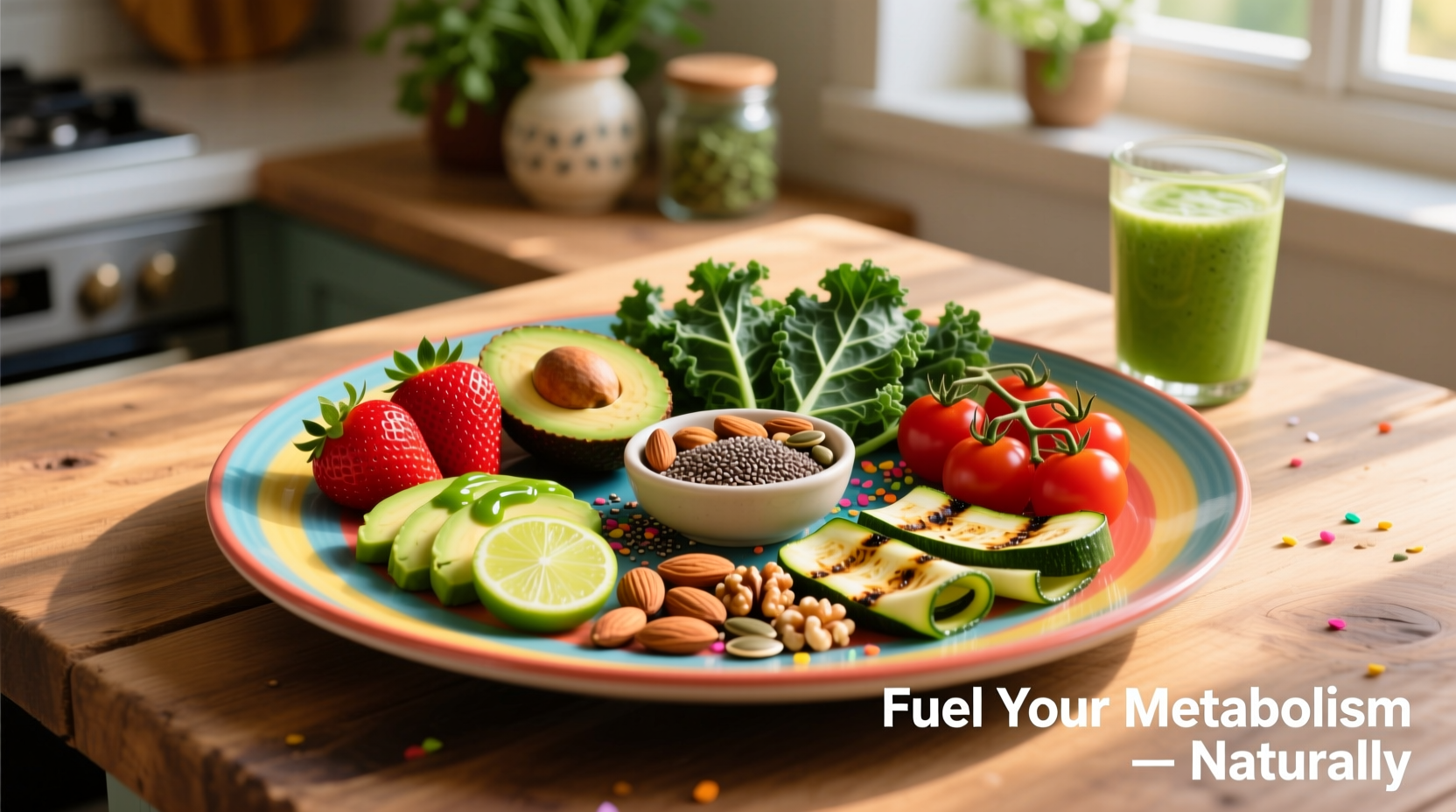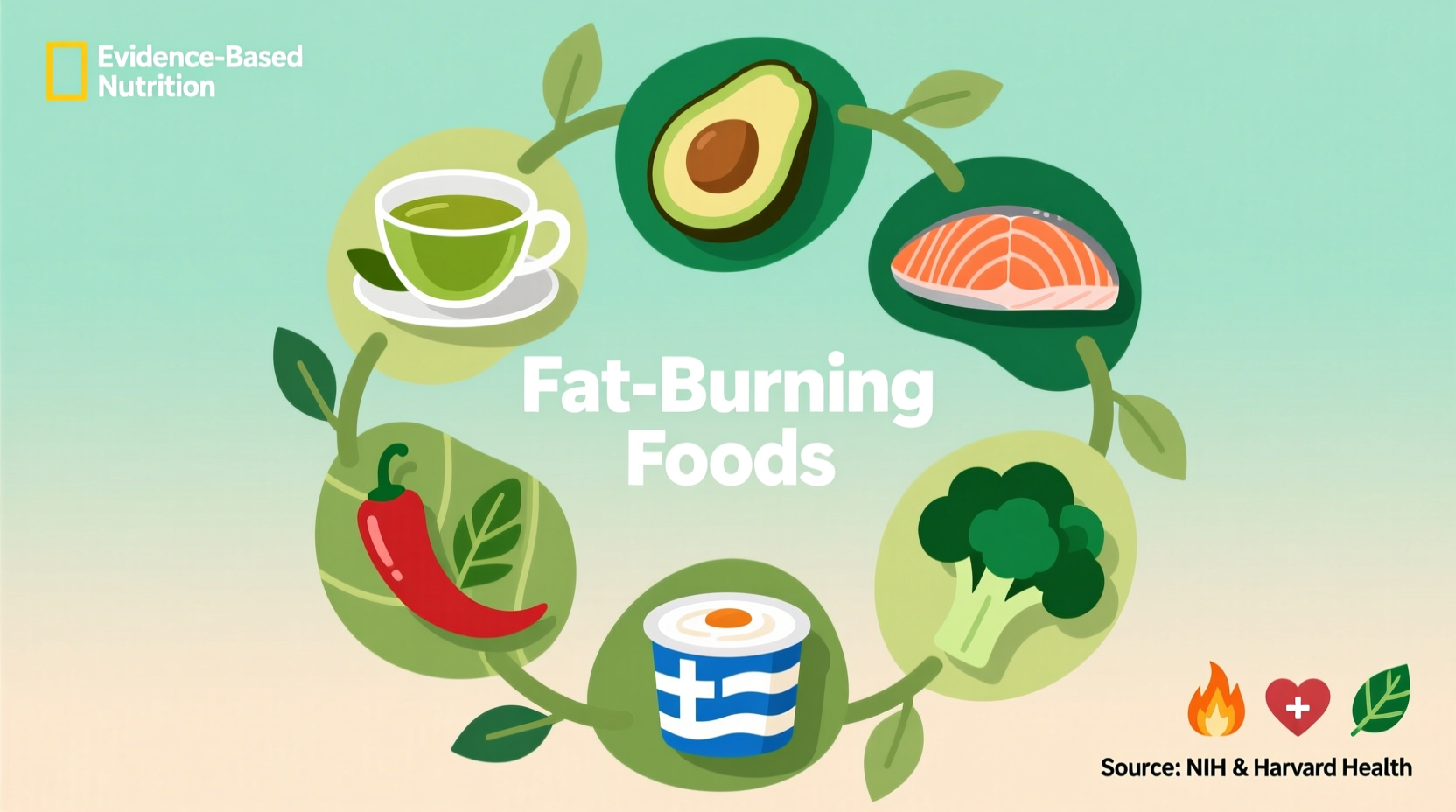Based on current scientific evidence, the most effective foods that support fat burning include green tea (rich in EGCG), chili peppers (containing capsaicin), lean proteins like chicken and fish, high-fiber vegetables such as broccoli and spinach, and healthy fats from avocados and nuts. These foods work by boosting metabolism, increasing satiety, and supporting hormonal balance when consumed as part of a balanced diet and active lifestyle.
When searching for foods that help burn fat, it's crucial to separate evidence-based facts from popular myths. While no single food magically melts away fat, certain nutrient-dense options can enhance your body's natural fat-burning processes when incorporated into a healthy eating pattern. Let's explore what actually works according to current nutritional science.
Understanding How Food Affects Fat Metabolism
Your body constantly burns fat as part of its energy metabolism, but certain foods can optimize this process through several mechanisms:
- Thermic effect - Some foods require more energy to digest, temporarily boosting calorie burn
- Hormonal regulation - Certain nutrients help balance insulin and other metabolism-regulating hormones
- Appetite control - High-protein and high-fiber foods increase satiety, reducing overall calorie intake
- Mitochondrial support - Specific compounds enhance cellular energy production
Research from the National Institutes of Health confirms that dietary components can influence metabolic rate by 5-15%, though individual responses vary significantly based on genetics, existing health conditions, and overall dietary patterns.
Evidence-Backed Fat-Burning Foods
1. Green Tea and Matcha
Green tea contains epigallocatechin gallate (EGCG), a powerful antioxidant that may increase fat oxidation by up to 17% during moderate exercise according to a comprehensive review in the American Journal of Clinical Nutrition. The combination of EGCG and caffeine creates a synergistic effect that enhances metabolic rate.
2. Chili Peppers and Capsaicin
Capsaicin, the compound that gives chili peppers their heat, has been shown to increase energy expenditure by approximately 50 calories per day. A study published in Chemical Senses found that regular consumption of capsaicin reduced abdominal fat in overweight adults over a 12-week period. Try incorporating cayenne pepper, jalapeños, or red pepper flakes into your meals.
3. High-Quality Protein Sources
Foods like eggs, lean chicken, fish, and Greek yogurt have the highest thermic effect of all macronutrients, requiring 20-30% of their calories just for digestion. Protein also preserves muscle mass during weight loss, which is crucial since muscle tissue burns more calories at rest. Research from the American Society for Nutrition shows high-protein diets increase satiety hormones by up to 60% compared to lower-protein alternatives.
| Food | Key Compound | Metabolic Effect | Evidence Level |
|---|---|---|---|
| Green Tea | EGCG | 5-10% metabolic boost | Strong human studies |
| Chili Peppers | Capsaicin | ~50 cal/day increase | Consistent human trials |
| Fatty Fish | Omega-3s | Improved insulin sensitivity | Strong observational data |
| Apple Cider Vinegar | Acetic acid | Modest appetite reduction | Limited human evidence |
4. Fiber-Rich Vegetables
Non-starchy vegetables like broccoli, spinach, and asparagus provide volume with minimal calories while delivering fiber that slows digestion and stabilizes blood sugar. A study in Nutrients journal found that increasing vegetable intake by just 100g daily correlated with 0.26kg greater weight loss over six months. These foods work through what researchers call the "volumetrics" principle - eating larger portions of low-energy-density foods.
5. Healthy Fats
Contrary to outdated diet advice, certain fats actually support fat burning. Avocados, nuts, seeds, and olive oil contain monounsaturated fats that improve insulin sensitivity and reduce inflammation. Research from the European Journal of Clinical Nutrition shows that moderate-fat diets rich in these sources lead to greater fat loss than very low-fat alternatives, particularly around the abdominal area.

Realistic Expectations and Context Boundaries
It's essential to understand the limitations of these fat-burning foods:
- They work within a calorie deficit - no food overrides excess calories
- Effects are modest - typically 50-100 extra calories burned daily
- Results take weeks to months, not days
- Individual responses vary based on genetics and gut microbiome
- They complement but don't replace exercise and sleep
The Centers for Disease Control and Prevention emphasizes that sustainable weight loss typically occurs at a rate of 1-2 pounds per week through a combination of dietary changes and increased physical activity. Foods that help burn fat work best as part of this comprehensive approach.
Practical Implementation Guide
Instead of searching for magic solutions, focus on these evidence-based strategies:
- Start your day right - Replace sugary breakfasts with protein-rich options like eggs with vegetables
- Hydrate strategically - Drink green tea between meals instead of sugary beverages
- Add spice gradually - Incorporate chili peppers into one meal daily, building tolerance over time
- Fill half your plate - With non-starchy vegetables at every meal
- Choose quality fats - Add 1/4 avocado or small handful of nuts to meals
Common Misconceptions Debunked
Let's address some persistent myths about fat-burning foods:
- Myth: "Grapefruit burns belly fat" - Fact: While nutritious, grapefruit doesn't specifically target abdominal fat
- Myth: "Detox teas melt fat" - Fact: Most are laxatives that cause water loss, not fat loss
- Myth: "Eating after 8pm stops fat burning" - Fact: Total daily calories matter more than timing
- Myth: "All calories are equal for fat loss" - Fact: Food quality significantly impacts metabolism and satiety
Building Sustainable Habits
The most effective approach combines these fat-supportive foods with other evidence-based strategies:
- Maintain a moderate calorie deficit (300-500 calories below maintenance)
- Include strength training 2-3 times weekly to preserve muscle mass
- Prioritize 7-9 hours of quality sleep nightly
- Manage stress through mindfulness or meditation
- Stay consistently active throughout the day
Remember that sustainable fat loss focuses on creating healthy habits rather than quick fixes. The foods discussed here work best as part of a balanced approach to nutrition and lifestyle.
Frequently Asked Questions
How quickly can I expect results from fat-burning foods?
Most research shows measurable effects take 4-12 weeks of consistent consumption. A study in the American Journal of Clinical Nutrition found participants consuming green tea extract daily saw significant fat loss after 8 weeks. Remember that these foods support but don't replace the need for a calorie deficit and regular exercise.
Do fat-burning foods work without exercise?
Yes, but with limitations. Foods like protein and fiber can support fat loss through increased satiety and thermic effect alone. However, research from the Journal of Obesity shows combining dietary changes with exercise yields 50% greater fat loss than diet alone. The most effective approach includes both strategic food choices and physical activity.
Are fat-burning supplements as effective as whole foods?
Generally no. Whole foods provide complex nutrient profiles that work synergistically, while supplements often isolate single compounds. A review in the Journal of the Academy of Nutrition and Dietetics found that whole food approaches produced more sustainable results than supplements. For example, whole chili peppers provide fiber and vitamins along with capsaicin, creating a more comprehensive metabolic effect.
Can I eat unlimited amounts of fat-burning foods?
No. While foods like green tea and vegetables have minimal calories, others such as nuts and avocados are calorie-dense. The National Institutes of Health emphasizes that even healthy foods contribute to your total calorie intake. For sustainable fat loss, practice portion awareness - for example, limit nuts to 1 ounce (about 20 almonds) per serving despite their fat-burning properties.
Do fat-burning foods work differently for men and women?
Research shows some differences in response. A study in the International Journal of Obesity found women may experience slightly greater appetite suppression from protein than men, while men often show stronger metabolic responses to capsaicin. However, the fundamental mechanisms remain similar across genders. Individual responses vary more based on factors like age, activity level, and overall health than gender alone.











 浙公网安备
33010002000092号
浙公网安备
33010002000092号 浙B2-20120091-4
浙B2-20120091-4